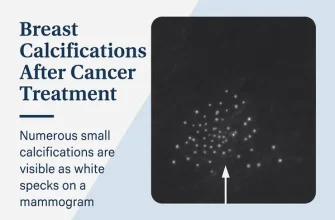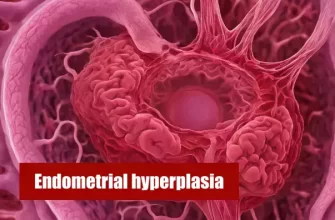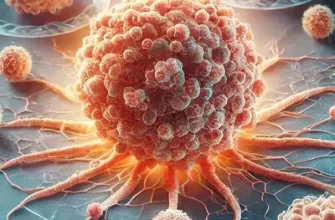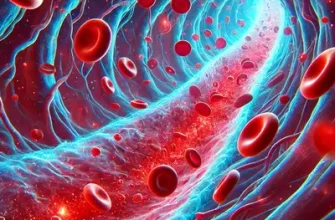What Is Hodgkin Lymphoma?
Hodgkin lymphoma, also known as Hodgkin’s lymphoma or Hodgkin’s disease, is a type of lymphoma, which is a cancer that originates in the lymphatic system. The lymphatic system is an integral part of the immune system, with a network of vessels and glands spread throughout the body that are involved in the production and circulation of lymphocytes, which are cells vital to immune response.
Key Characteristics:
- B-Cell Origin: Hodgkin lymphoma is generally believed to originate from B cells, a type of white blood cell.
- Reed-Sternberg Cells: The disease is characterized by the presence of Reed-Sternberg cells, a specific type of abnormal giant cell, discernible under a microscope.
- Stages and Symptoms: Hodgkin lymphoma presents in five stages from 0 (zero) to IV, with symptoms including painless swelling of lymph nodes, fever, night sweats, unexplained weight loss, and fatigue.
Research and Future Directions:
Research in the field of Hodgkin lymphoma aims at enhancing treatment efficacy while minimizing side effects. As such, new therapeutic agents are being explored, including targeted therapies and immune checkpoint inhibitors that offer a more precise approach to treatment, potentially improving outcomes and quality of life for patients.
Awareness and early detection remain crucial for effective management of Hodgkin lymphoma. Individuals are encouraged to seek medical attention if they experience persistent symptoms associated with the disease.
Common Symptoms of Hodgkin Lymphoma
Commonly observed indications and manifestations associated with Hodgkin lymphoma encompass:
- Painless Swelling of Lymph Nodes:
- A common initial indication of Hodgkin lymphoma is the painless swelling of one or multiple lymph nodes, typically located in the neck, underarm, or groin region.
- Persistent Fatigue:
- Hodgkin lymphoma can manifest as unexplained and ongoing fatigue that persists even after periods of rest.
- Fever and Chills:
- Patients might experience fevers, particularly at night, and chills. These symptoms often come and go and are frequently accompanied by night sweats.
- Night Sweats:
- Severe sweating during the night to the point where clothing or bedding needs to be changed can be linked to Hodgkin lymphoma.
- Unexplained Weight Loss:
- Losing a significant amount of weight without a change in diet or physical activity could indicate Hodgkin lymphoma.
- Itchy Skin:
- Generalized itching without a rash, which can be severe, is another symptom that some individuals experience.
- Loss of Appetite:
- Affected individuals may notice a decrease in their desire to eat, potentially leading to weight loss.
- Shortness of Breath or Cough:
- If the lymph nodes in the chest area are impacted by Hodgkin lymphoma, they can exert pressure on the windpipe leading to breathing difficulties or a persistent cough.
- If the lymph nodes in the chest area are impacted by Hodgkin lymphoma, they can exert pressure on the windpipe leading to breathing difficulties or a persistent cough.
- Enlargement of the Spleen:
- Enlarged spleen, also known as splenomegaly, can occur and result in discomfort or pain in the upper left abdomen.
It should be mentioned that several of these symptoms can also be linked to other, less severe conditions.
Common Causes of Hodgkin Lymphoma
Although the precise reasons behind Hodgkin lymphoma are not completely known, there are several factors that have been recognized as potential risks for developing the illness.
- Age and Gender:
- Hodgkin lymphoma is frequently diagnosed in two specific age brackets: individuals between the ages of 15 and 40 who are classified as young adults, and individuals who are over the age of 55 and considered older adults.
- It is slightly more prevalent in males than females.
- Family History:
- If someone has a sibling or parent with Hodgkin lymphoma, their chances of developing the disease are slightly increased.
- Epstein-Barr Virus (EBV) Infection:
- Younger individuals who are infected with the Epstein-Barr virus, known to cause mono, are more likely to be at a higher risk of developing Hodgkin lymphoma.
- Immune System Deficiency:
- Individuals with HIV/AIDS or those taking immunosuppressive drugs following an organ transplant are at a higher risk.
- Certain congenital immunodeficiency disorders can also increase Hodgkin lymphoma risk.
- Socioeconomic Status:
- There is a small increase in the likelihood of developing Hodgkin lymphoma for individuals with a higher socioeconomic status. This could be attributed to factors like being exposed to common infections later in childhood.
- Autoimmune Diseases:
- People with certain autoimmune diseases, like rheumatoid arthritis and systemic lupus erythematosus (SLE), may have a higher risk of developing Hodgkin lymphoma.
- Previous Infections:
- Past infections with certain strains of human immunodeficiency virus (HIV) and hepatitis C virus (HCV) may contribute to an increased risk.
- Environmental Exposures:
- Some evidence suggests that exposure to specific chemicals like benzene and certain pesticides might increase the risk of developing Hodgkin lymphoma, but research findings have been mixed.
Understanding these risk factors can help in creating awareness about Hodgkin lymphoma, but it is essential to consult with medical professionals for personalized risk assessments and recommendations.
Diagnosis of Hodgkin Lymphoma
Identifying this disease involves a multifaceted approach, incorporating clinical evaluation, imaging, and pathology.
Initial Assessment:
- Symptoms and Health History: Patients may exhibit signs such as painless swelling of lymph nodes, unexplained fever, night sweats, weight loss, and fatigue. A detailed medical history helps assess risk factors and symptom duration.
- Physical Examination: A thorough examination focuses on palpating for swollen lymph nodes in the neck, armpits, and groin, as well as assessing for an enlarged spleen or liver.
Diagnostic Tests and Procedures:
- Blood Tests: Blood counts and markers of inflammation, such as erythrocyte sedimentation rate (ESR) or C-reactive protein (CRP), provide indirect evidence that may point toward Hodgkin lymphoma.
- Imaging: Chest X-ray, computed tomography (CT) scans, positron emission tomography (PET) scans, and magnetic resonance imaging (MRI) can visualize lymph node enlargement and determine the extent of disease spread.
- Biopsy: The definitive diagnosis requires a biopsy, typically an excisional lymph node biopsy, to obtain tissue samples for microscopic examination for Reed-Sternberg cells.
- Bone Marrow Biopsy: In some cases, to determine if the disease has spread to the bone marrow.
- Pulmonary Function Tests: These may be conducted if there is a concern about the involvement of lung tissue or if treatments may potentially affect lung function.
Staging of Hodgkin Lymphoma
Following diagnosis, staging is crucial to determine the extent of the disease, which includes the number of lymph node regions involved and whether the disease has spread to other organs. The Ann Arbor Staging System, with modifications from the Cotswolds meeting, is the most widely adopted method:
| Stage | Involvement |
|---|---|
| I | Involvement of a single lymph node region |
| II | Two or more lymph node regions on the same side of the diaphragm |
| III | Lymph node regions on both sides of the diaphragm |
| IV | Disseminated involvement of one or more extralymphatic organs |
Treatment Methods of Hodgkin Lymphoma and Their Effectiveness
Hodgkin lymphoma, or Hodgkin’s disease, is a form of lymphoma distinguished by the existence of Reed-Sternberg cells. There are several treatment choices accessible, and their efficacy is mainly determined by the disease’s stage, the patient’s age, and overall well-being. These are the most prevalent approaches for treating Hodgkin lymphoma:
1. Chemotherapy
Chemotherapy is a treatment that utilizes medications to eliminate cancer cells. In the case of Hodgkin lymphoma, a commonly employed approach involves using a combination of chemotherapy drugs, such as the ABVD regimen which includes doxorubicin, bleomycin, vinblastine, and dacarbazine.
- Effectiveness: Chemotherapy is very effective in early and advanced stages, resulting in high remission rates. Long-term remission can often be achieved.
2. Radiation Therapy
Radiation therapy involves the use of high-energy rays or particles to destroy cancer cells. It can be used as a standalone treatment for early-stage Hodgkin lymphoma or in conjunction with chemotherapy for advanced stages.
- Effectiveness: This treatment is highly effective for localized disease and can also provide excellent control of the disease when combined with chemotherapy.
3. Stem Cell Transplant
In cases where Hodgkin lymphoma does not improve with chemotherapy or returns, a stem cell transplant may be an alternative. There are two kinds of these transplants: autologous, which uses the patient’s own stem cells, and allogeneic, which uses stem cells from a donor.
- Effectiveness: Stem cell transplants can be effective for patients with recurrent disease, but they come with significant risks and potential complications, such as infection and graft-versus-host disease.
4. Immunotherapy
Immunotherapy boosts the patient’s immune system to fight cancer. Drugs like checkpoint inhibitors (e.g., nivolumab or pembrolizumab) have been used to treat Hodgkin lymphoma, particularly after other treatments have failed.
- Effectiveness: Immunotherapy has shown promising results, especially for relapsed or refractory Hodgkin lymphoma. It is generally well-tolerated and can lead to durable responses.
5. Targeted Therapy
Targeted therapy drugs work by targeting specific aspects of cancer cells that allow them to grow and proliferate. For example, the drug brentuximab vedotin targets CD30, a protein found on the surface of Reed-Sternberg cells.
- Effectiveness: Targeted therapy can be very effective, particularly for patients who have not responded to or have relapsed after chemotherapy.
Overall Effectiveness
| Treatment Method | Early-stage Effectiveness | Advanced-stage Effectiveness | Recurrent Disease Effectiveness |
|---|---|---|---|
| Chemotherapy | High | High | Moderate |
| Radiation Therapy | High | Moderate-High | Limited |
| Stem Cell Transplant | Not Applicable | Moderate-High | High |
| Immunotherapy | Not Typically Used | Not Typically Used | High |
| Targeted Therapy | Not Typically Used | Not Typically Used | High |
It is important to note that the effectiveness of these treatments can vary widely from patient to patient. Factors like personal health, exact Hodgkin lymphoma subtype, and previous treatments will influence the outcomes.
Individualized treatment plans are frequently designed to suit the specific requirements and situations of each person. A team of experts, such as hematologists, oncologists, radiologists, and other specialists, join forces to collectively determine the most ideal treatment method for every patient. Their decision takes into account the effectiveness of the treatment as well as any potential negative effects it may have.
Prevention
Although the exact cause of Hodgkin lymphoma is not fully understood, certain factors may increase the risk of developing this disease. While there is no sure way to prevent Hodgkin lymphoma, adopting a healthy lifestyle may help to mitigate some of these risks.
Infection Prevention:
- Maintain good hygiene and regular hand-washing to reduce the risk of infections.
- Consider vaccinations where appropriate, especially if immunocompromised.
Healthy Immune System Support:
- Eat a balanced diet rich in fruits, vegetables, whole grains, and lean proteins to support the immune system.
- Engage in regular physical activity to promote overall health and immunity.
Avoidance of Immunodeficiency-Inducing Behaviors:
- Refrain from sharing needles or engaging in unprotected sex to reduce the risk of HIV/AIDS.
- Stop alcohol consumption and smoking.
Minimize Exposure to Carcinogens:
- Reduce contact with potentially harmful chemicals, such as pesticides or benzene, which are associated with an increased risk of developing lymphoma.
- Practice sun safety to limit exposure to ultraviolet (UV) radiation which may contribute to skin cancer and potentially lymphoma.
Maintaining a Healthy Weight:
- Aim for a body mass index (BMI) within the normal range through diet and exercise as obesity is a known risk factor for various cancers.
Regular Medical Check-ups:
- Schedule routine medical check-ups to detect potential health issues early.
- Discuss any family history of cancers with a healthcare provider for tailored advice and possible surveillance.
Environmental and Occupational Safety:
- Wear protective gear when working with toxic substances.
- Follow safety protocols to minimize occupational exposure to hazardous materials.
Stop Alcohol and Tobacco Use:
- Eliminate tobacco use; non-smokers should avoid secondhand smoke.
- Stop alcohol intake.
Lifestyle Considerations for Hodgkin Lymphoma Patients
For those diagnosed with Hodgkin lymphoma, lifestyle modifications may play a role in supporting treatment and improving quality of life:
- Nutrition: A nutrient-rich diet may help manage symptoms and maintain strength during treatment.
- Exercise: Light-to-moderate exercise may reduce fatigue and improve emotional well-being, but patients should consult with their healthcare providers for personalized guidelines.
- Rest: Adequate rest is essential for recovery and immune system support during treatment.
- Support Networks: Engaging with support groups or counseling services can be invaluable for emotional support.
Conclusion
While no lifestyle change can guarantee prevention of Hodgkin lymphoma, certain measures can potentially reduce risk and support overall health. For those already diagnosed, lifestyle considerations are an essential component of the holistic approach to treatment and recovery. Awareness and a proactive stance on health can make a significant difference in disease management and quality of life.









